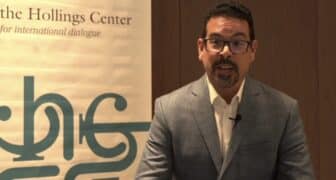DIALOGUE SNAPSHOT REPORT
December 12-14, 2019
Tunis, Tunisia
Dialogue Summary: New Media
The way we receive information—whether it is the news, commercial information, or personal communication—has drastically changed. The rise of social media platforms has altered how we consume information and news throughout the world. Conversely, the new methods with which news and information are packaged have created alternative pathways for free speech in environments where the conventional media landscape has become increasingly selective, censored, or even oppressive. Citizens began using their personal devices to spread and curate information. Interconnectedness through social media became a method of mobilization. However, these new pathways also meant that information was spreading virally in an unchecked fashion. Disinformation became a powerful tool used by state and non-state actors, public and private entities alike.
This new landscape is more entropic and crowded. But, this also created greater accessibility, both to journalists and audiences. Research shows that television remains the preferred medium of news/information in MENA. Yet, there is an undeniable paradigm shift in how societies receive their information/news, and how journalists produce it. To understand some of these new methods and share experiences across countries, the Hollings Center convened a dialogue in Tunis in December 2019. The dialogue covered issues such as new business models for media outlets, diversity in newsrooms, new modes of storytelling, trust in the media, disinformation and misinformation, and the trajectory of the journalism profession.



